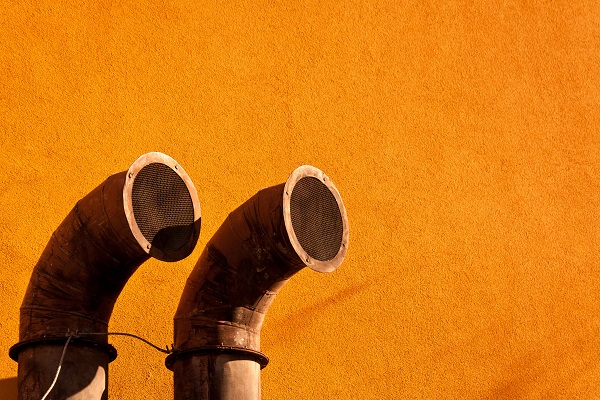What To Do When Your Furnace is Leaking Water
5 Signs That Your Furnace Filter Needs Replacement
April 20, 2023Thermostat Not Reaching Set Temperatures? Causes and Solutions
April 20, 2023What To Do When Your Furnace is Leaking Water

Water leaks in your home can be an anxiety inducing, time-consuming, costly damage. It’s understandable to panic when you find out that your furnace is leaking water, especially when the weather is still cold!
Here’s what we advise you do:
Turn Off Your Furnace and Call TechnoTemp for Repairs!The very first thing you want to do when you find a leak, is turn your furnace off. You want to make sure your thermostat is off, then turn the shut-off valve near the gas line off, which is connected to your furnace and associated electrical breakers.
The best person to handle a furnace leak is an HVAC professional, so once you’ve got your furnace turned off, call us to come fix your problem.
You’ll also need to mop up any water on the floor which could further cause damage to your home and furnace, but remember to only do so once the electricity is cut off. Why Is My Furnace Leaking Water?Depending on the type of furnace you have, whether or not it is a high-efficiency furnace or a conventional furnace, there could be a few causes;
1. High-Efficiency: A leak or clog in the condensate linesHigh-efficiency furnaces create condensation through the heat exchange process, and if not functioning properly, a problem with your condensate lines will cause a puddle around your furnace.
2. High-Efficiency: There’s a problem with your condensate pumpThe condensate pump pushes water through the lines and away from your furnace. If there’s a mechanical problem, it could cause a leak. But the problem could be that there’s an issue with the float and check valves, or that it wasn’t placed properly, or that the clog in the line itself is having a ripple effect.
3. Conventional: The metal exhaust pipe is creating condensationWith conventional furnaces with an AFUE rating of less than 90, the issue could be that the metal exhaust in the vent pipe is the problem. In high-efficiency furnaces this piece is
replaced with a white PVC vent pipe. If the metal pipe, which carries out hot gas isn’t properly sized, gasses can get trapped by the extra air. When they cool down eventually, it forms condensation which leaks out to your home.
4. Any Furnace: Dangerous Heat Exchanger ProblemA more serious problem would be an issue with your heat exchanger, a vital part of the furnace and combustion process. A heat exchanger is a metal shield that stops the exhaust gas from getting into your ducts with warm air. When it heats up, the metal expands and contracts and could crack after years of use…leading to dangerous and life-threatening CO2 in your home’s air.
Standard furnaces have only one heat exchanger, while high-efficiency furnaces have a secondary exchanger on models where water is changed from vapor to liquid. Both need attention and maintenance, so your issue may depend on the type of furnace you have.
5. Any Furnace: The humidifier is leakingMany heating systems have built-in humidifiers, which have water constantly moving through them. If they leak or get clogged, it can appear that your furnace is leaking. Humidifiers have their own set of rules, but a leak is a leak. At TechnoTemp, our certified technicians can inspect your furnace to find out exactly what the problem is, and how to fix it.
Replace your humidifier pads!It’s important to keep replacing your humidifier pads periodically so that they don’t get dirty and clogged up and don’t drain your time and energy. Not to mention that trapped moisture can cause bacteria and mold, which is unhealthy for the whole family. Clogged and dirty humidifier pads will actually wear out your humidifier long before its time. Check out our selection of humidifier pads here.
6. Any Furnace: You have a dirty furnace filterSimilarly to the humidifier pads, it’s important to replace your furnace filters periodically. A dirty furnace restricts airflow, which makes it overwork, heat up and eventually breakdown. Replacing the filter is simple and inexpensive, and we’ve got a great selection you can browse through to find one that fits you. Set a reminder to replace your furnace filter every 3 months!
Final ThoughtsMake sure to keep your furnace well maintained. The more you take care of it, the longer it will last and keep your home safe. Have a certified technician look at your furnace regularly and schedule at least an annual maintenance check as the least you could do. Make sure that you replace parts that need replacing ASAP (like flue pipe, drain line, water line, furnace coil, etc.) so that your furnace operates at its maximum capacity – saving you time and money in the long run.
Regardless of which kind of furnace you have, we can make the necessary repairs to get your furnace back in tip-top shape. Our team is highly trained, professional and can diagnose the problem you have to get you the right fix! Contact us to set up an appointment today!
Water leaks in your home can be an anxiety inducing, time-consuming, costly damage. It’s understandable to panic when you find out that your furnace is leaking water, especially when the weather is still cold!
